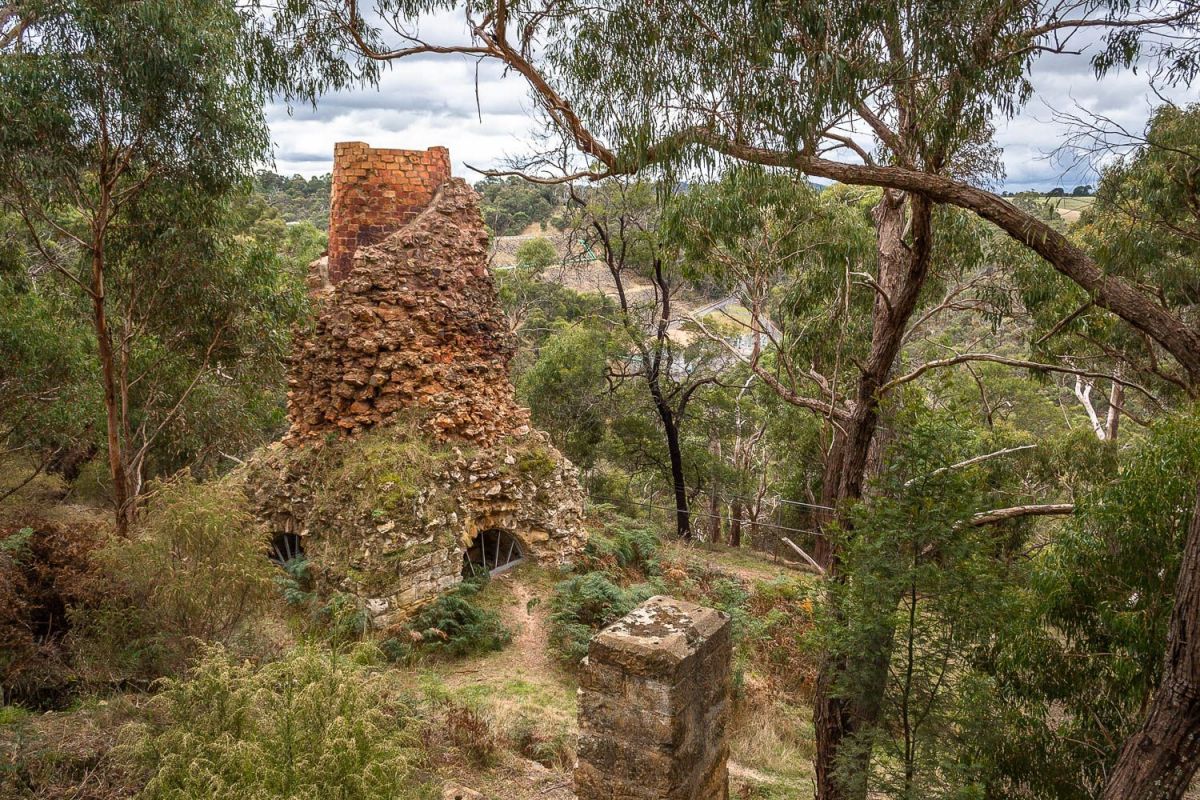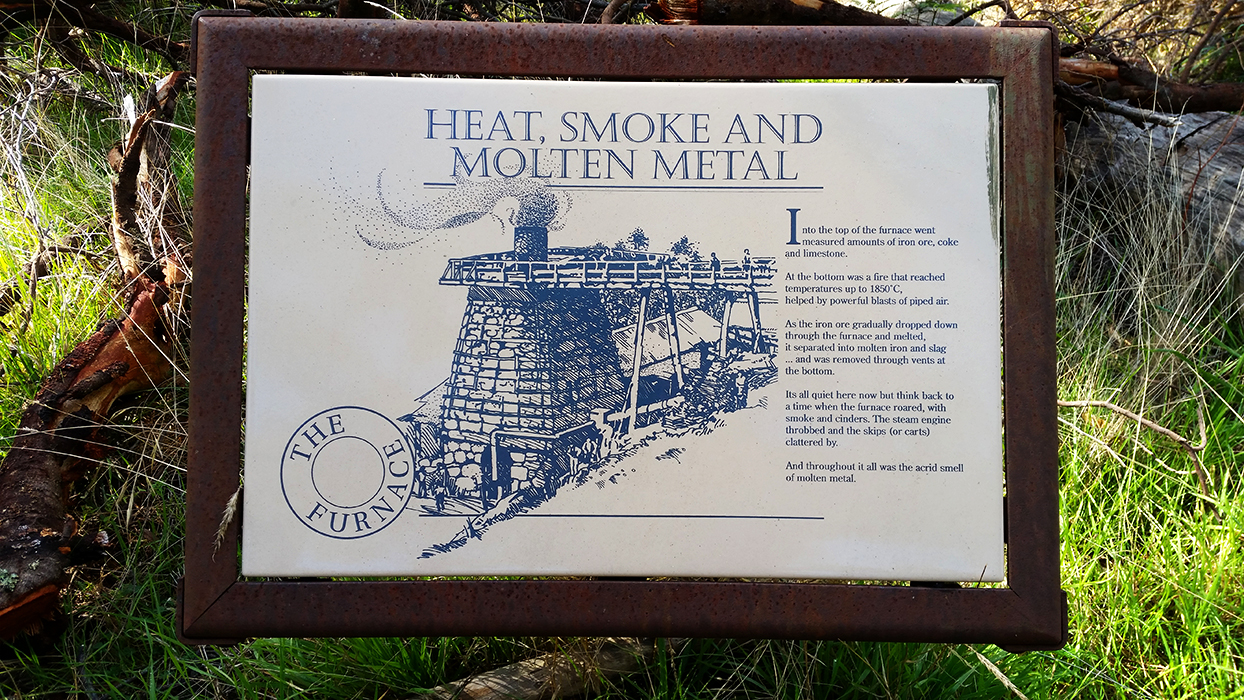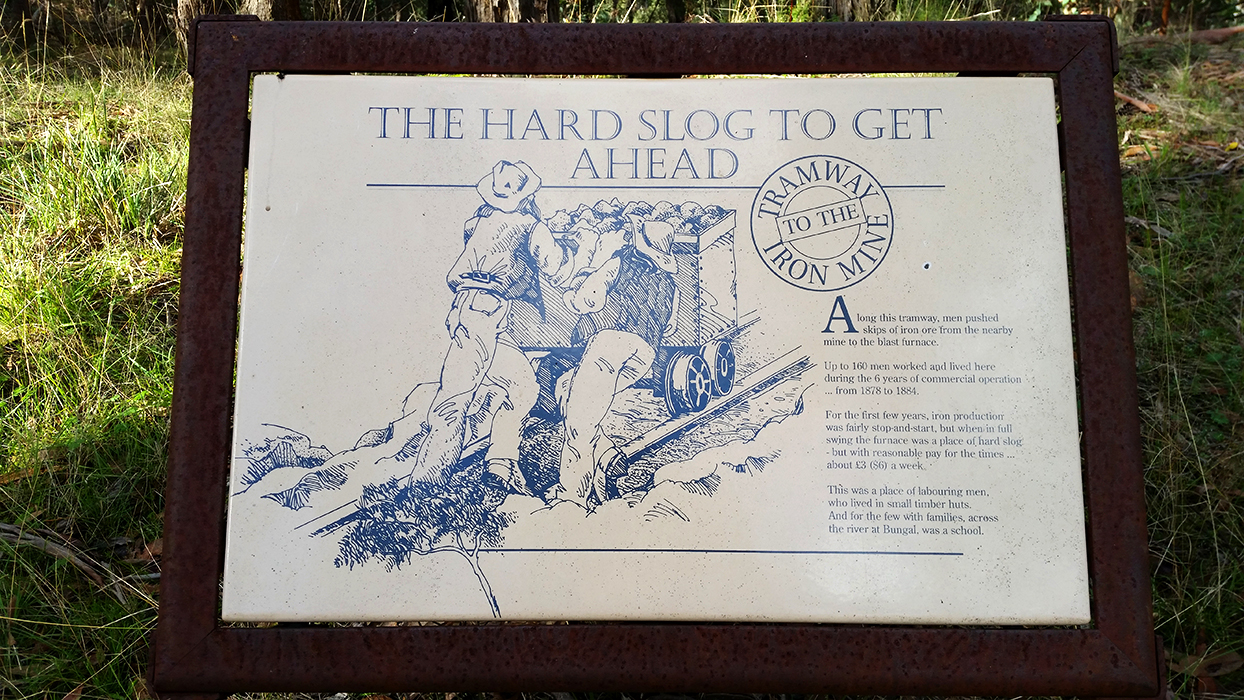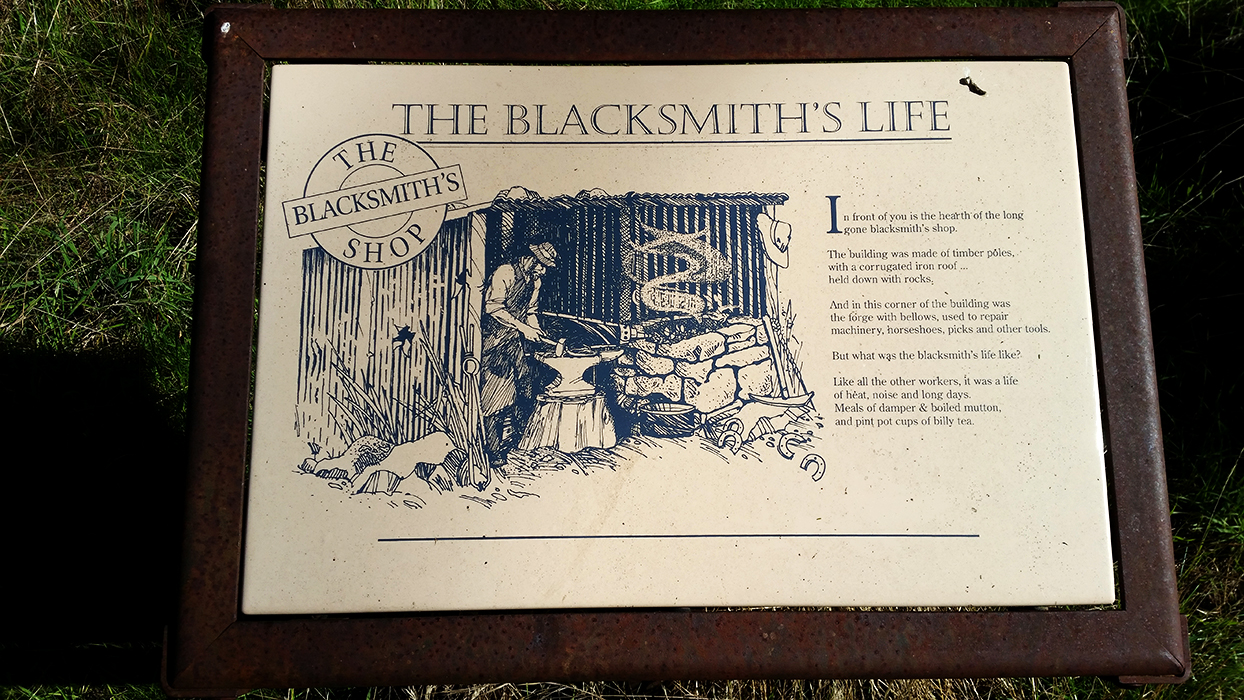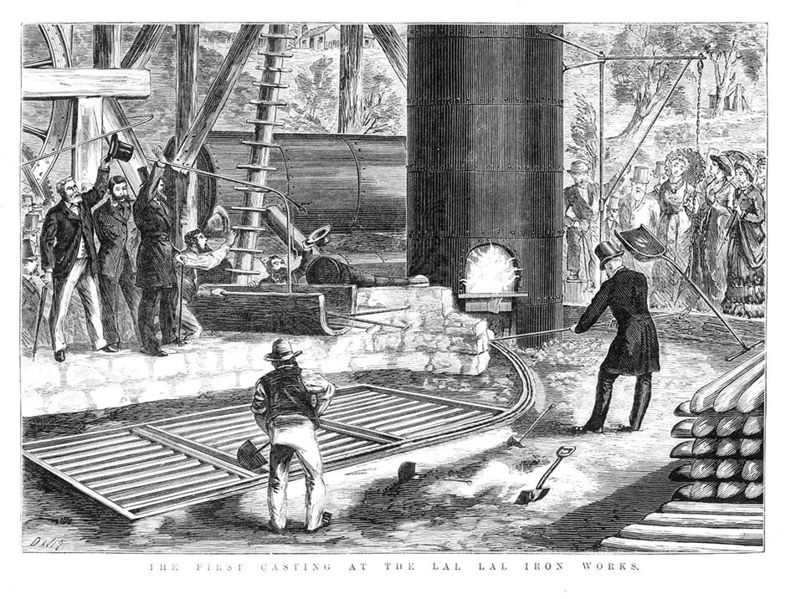The Lal Lal Iron Mine and Blast Furnace is the site of Victoria's only attempt at smelting iron ore in a blast furnace, with several significant historical features remaining to see today.
Located a scenic twenty minute drive from Ballarat in the Bungal Historical Area, visitors can spend time exploring the site, camping in the spacious free campground, and bushwalking in the surrounding forest.
Walking tracks at the iron mine and blast furnace
- Heritage Walk, 400m circuit - Begins at the picnic area (or alternatively at a car park around the corner on Thynes Road), and takes you on a short scenic walk along the hillside to the blast furnace. A series of informative signs teach you about the Lal Lal Iron Company, the blast furnace, the former blacksmith's shop, and the men who lived and worked there. The walking track is narrow and has some small obstructions.
- Blast Furnace viewing platform, 250m return - short walk down the hillside to the blast furnace
- Iron Mine no. 3, 50m - short, easy walk to the fascinating remains of an iron mine
Free camping at the iron mine and blast furnace
Free camping is permitted at the Lal Lal Iron Mine and Blast Furnace. No booking is required.
The Iron Mine and Blast Furnace features a peaceful picnic area with wood fire barbecues, a single wooden table (with no seats), a large toilet block, and plenty of room for camping.
A large gravel parking area provides room for caravans and RVs.
There are areas at this historic site where camping is not permitted. These are indicated by small signs around the perimeter of the camping area.
GOLDEN NUGGET DISCOVERY TOURS
Experience the best Victoria has to offer with
Golden Nugget Discovery Tours, a genuine Ecotourism Operator offering a wide range of nature, heritage and adventure tours throughout the many unique regions of Western and Central Victoria. Guided tours are available across the Goldfields, Daylesford & Spa Country, Pyrenees Wine Region, Grampians National Park, and Great Ocean Road!
Statement of Significance
Last updated on - March 3, 2000
Victoria's only attempt at mining and smelting iron ore took place at Lal Lal in the latter stages of the nineteenth
century. In the mid 1870s, the Lal Lal Iron Company installed mining machinery, erected a large blast furnace
and constructed a tramway to convey ore from the mine. For a brief time in the early 1880s, the Lal Lal Company
had over 100 men engaged in mining and smelting the iron ore, gathering limestone (flux) and firewood, and
manufacturing charcoal. The company also operated a foundry at Ballarat. The Lal Lal Iron Works had ceased
operations by the end of the 1880s.
The Lal Lal Iron Mine and Smelting Works is of historical, archaeological and scientific importance to the State of
Victoria. The site is already listed on the Register of the National Estate.
The Lal Lal Iron Mine and Smelting Works is historically and scientifically important as the site of the State's only
attempt to smelt iron ore with a blast furnace. The significance of the site is enhanced by the substantial
remnants of the blast furnace being the only one of its type surviving in the southern hemisphere.
The Lal Lal Iron Mine and Smelting Works is scientifically important for its illustration of local adaptation of
imported iron smelting technology. The design of the furnace, construction materials, and smelting technique
used at the site harking back to 18th century European iron smelting technology. The site is archaeologically
important for its potential to yield artefacts and evidence which will be able to provide significant information
about the technological history of mining.
The following text is displayed on information signs at the Iron Mine and Blast Furnace in Lal Lal:
HEAT, SMOKE AND MOLTEN METAL
Into the top of the furnace went measured amounts of iron ore, coke and limestone.
At the bottom was a fire that reached temperatures up to 1850 degrees Celsius, helped by powerful blasts of piped air.
As the iron ore gradually dropped down through the furnace and melted, it separated into molten iron and slag ... and was removed through vents at the bottom.
It's all quiet here now but think back to a time when the furnace roared, with smoke and cinders. The steam engine throbbed and the skips (or carts) clattered by.
And throughout it all was the acrid smell of molten metal.
THE HARD SLOG TO GET AHEAD
Along this tramway, men pushed skips of iron ore from the nearby mine to the blast furnace.
Up to 160 men worked and lived here during the 6 years of commercial operation ... from 1878 to 1884.
For the first few years, iron production was fairly stop-and-start, but when in full swing the furnace was a place of hard slog but with reasonable pay for the times ... about £3 ($6) a week.
This was a place of labouring men, who lived in small timber huts. And for the few with families, across the river at Bungal, was a school.
THE BLACKSMITH'S LIFE
In front of you is the hearth of the long gone blacksmith's shop.
The building was made of timber poles, with a corrugated iron roof ... held down with rocks.
And in this corner of the building was the forge with bellows, used to repair machinery, horseshoes, picks and other tools.
But what was the blacksmith's life like?
Like all the other workers, it was a life of heat, noise and long days. Meals of damper & boiled mutton, and pint pot cups of billy tea.
YOU ARE STANDING IN AN OLD IRON MINE!
Here were thousands of tons of red iron ore, in easy reach of the industries of Ballarat, ready to be made into pig iron.
Iron that was wanted for a variety of engineering works - such as the "Phoenix" steam trains, gold mining machinery, and fancy cast iron balconies.
But the labour intensive production costs eventually outstripped the iron's selling price, making the operation unprofitable.
So in 1884 the mine closed, and the workers left to seek other work in other places leaving the mines, tramways, terraces and furnace as a reminder of their presence.
The first casting at the Lal Lal Iron Works, 1878. State Library of Victoria (IAN28/11/78/196)
